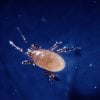NickNasty
Well-Known Member
So I have all these tiny brown bugs in my soil. I had springtails in my soil a while back but they have all seemed to disappear and the reason I think is because I think I have predatory mites called "Hypoaspis miles" The reason I believe that is what these are is cause they look very similar too them and I have zero plant problems that I can see. Here are some pics they are not very good as these suckers are small and fast.



Here are some pics from the web of Hypoaspis miles
 View attachment 2470336
View attachment 2470336
Anyone have any thought on this? Again I see zero plant damage and I use to have springtails and now don't.
Here is what the web has to say about them < they are sold for soil dwelling pest control.
This tiny (0.5 mm) light-brown mite naturally inhabits the top 1/2" layer of soil where fungus gnats, as well as springtails and thrips pupae dwell. The female Hypoaspis mites lay their eggs in the soil, which hatch in 1-2 days, and the nymphs and adults feed on the soil-dwelling pests. Populations of Hypoaspis include both sexes, but the males are much smaller and rarely seen. Each Hypoaspis mite will consume 1-5 prey or eggs per day. They survive by feeding on algae and/or plant debris when insects aren't available. Their entire life cycle is 7-11 days.
Hypoaspis are used primarily for control of fungus gnat larvae, but they also feed on western flower thrips pupae



Here are some pics from the web of Hypoaspis miles
 View attachment 2470336
View attachment 2470336Anyone have any thought on this? Again I see zero plant damage and I use to have springtails and now don't.
Here is what the web has to say about them < they are sold for soil dwelling pest control.
This tiny (0.5 mm) light-brown mite naturally inhabits the top 1/2" layer of soil where fungus gnats, as well as springtails and thrips pupae dwell. The female Hypoaspis mites lay their eggs in the soil, which hatch in 1-2 days, and the nymphs and adults feed on the soil-dwelling pests. Populations of Hypoaspis include both sexes, but the males are much smaller and rarely seen. Each Hypoaspis mite will consume 1-5 prey or eggs per day. They survive by feeding on algae and/or plant debris when insects aren't available. Their entire life cycle is 7-11 days.
Hypoaspis are used primarily for control of fungus gnat larvae, but they also feed on western flower thrips pupae
